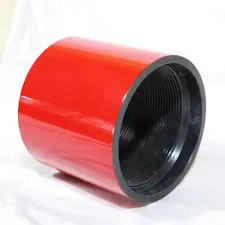- Afrikaans
- Albanian
- Amharic
- Arabic
- Armenian
- Azerbaijani
- Basque
- Belarusian
- Bengali
- Bosnian
- Bulgarian
- Catalan
- Cebuano
- Corsican
- Croatian
- Czech
- Danish
- Dutch
- English
- Esperanto
- Estonian
- Finnish
- French
- Frisian
- Galician
- Georgian
- German
- Greek
- Gujarati
- Haitian Creole
- hausa
- hawaiian
- Hebrew
- Hindi
- Miao
- Hungarian
- Icelandic
- igbo
- Indonesian
- irish
- Italian
- Japanese
- Javanese
- Kannada
- kazakh
- Khmer
- Rwandese
- Korean
- Kurdish
- Kyrgyz
- Lao
- Latin
- Latvian
- Lithuanian
- Luxembourgish
- Macedonian
- Malgashi
- Malay
- Malayalam
- Maltese
- Maori
- Marathi
- Mongolian
- Myanmar
- Nepali
- Norwegian
- Norwegian
- Occitan
- Pashto
- Persian
- Polish
- Portuguese
- Punjabi
- Romanian
- Russian
- Samoan
- Scottish Gaelic
- Serbian
- Sesotho
- Shona
- Sindhi
- Sinhala
- Slovak
- Slovenian
- Somali
- Spanish
- Sundanese
- Swahili
- Swedish
- Tagalog
- Tajik
- Tamil
- Tatar
- Telugu
- Thai
- Turkish
- Turkmen
- Ukrainian
- Urdu
- Uighur
- Uzbek
- Vietnamese
- Welsh
- Bantu
- Yiddish
- Yoruba
- Zulu
coupling for tubing
Coupling for Tubing Essential Insights for Effective Connections
When it comes to the oil and gas industry, the integrity and efficiency of tubing systems are paramount for successful operations. Couplings serve as critical components in these systems, providing secure connections between tubing sections while maintaining the integrity of the entire system. This article delves into the significance of couplings for tubing, their types, applications, and best practices.
Understanding Couplings
A coupling is a device used to connect two segments of tubing, allowing for the continuous flow of fluids or gases. In the context of production and transportation in the oil and gas sector, couplings must withstand high pressures, corrosive environments, and substantial mechanical stresses. Their primary function is to ensure that there are no leaks or failures at the joints, which could lead to costly downtime, safety hazards, and environmental risks.
Types of Couplings
Couplings come in various types, each suited for specific materials and operating conditions. Here are some commonly used types
1. Threaded Couplings These are one of the most traditional and widely used coupling types. They feature male and female threads that screw together to form a secure joint. Threaded couplings are popular due to their ease of use and reliable seal.
2. Welded Couplings For applications requiring enhanced strength and durability, welded couplings are an excellent choice. They are typically used in high-pressure environments, where the integrity of the joint is crucial. Welding creates a seamless bond between the tubing sections, minimizing the risk of leaks.
3. Flanged Couplings Flanged couplings utilize flat surfaces with bolt holes, allowing for easy assembly and disassembly. This type is common in installations where regular maintenance is required, offering flexibility while maintaining strong connections under pressure.
4. Compression Couplings These couplings are designed to create a tight seal through mechanical compression. This type is often used in smaller or less critical applications and can be a practical choice for quick repairs.
Applications of Couplings
In the oil and gas industry, couplings are indispensable in various applications
coupling for tubing

- Well Drilling Couplings are essential in connecting drilling pipes together, ensuring reliable fluid movement to and from the drilling site.
- Pipelines In both gathering and distribution pipelines, couplings facilitate the joining of pipes to manage the flow of crude oil, natural gas, and other liquids.
- Production Systems In production, couplings connect various components of the extraction system, including the flow lines and separators, vital for efficient oil recovery.
Best Practices for Coupling Installation and Maintenance
To ensure the longevity and reliability of couplings in tubing applications, adhering to best practices is essential
1. Proper Selection Choose the appropriate coupling type based on the specific application, considering factors like pressure, temperature, and the nature of the fluids being transported.
2. Installation Procedures Follow manufacturer guidelines for installation. This includes using the correct tools and techniques to avoid over-tightening or damaging the coupling.
3. Regular Inspections Conduct regular inspections to detect signs of wear, corrosion, or damage. Early identification of issues can prevent costly failures and downtime.
4. Maintenance Implement a routine maintenance schedule that includes cleaning, lubrication, and replacement of worn components to maintain the integrity of the coupling and surrounding systems.
Conclusion
Couplings play a vital role in the functionality and safety of tubing systems in the oil and gas industry. By understanding the different types of couplings and their applications, along with best practices for installation and maintenance, operators can ensure the effective operation of their systems. As the industry continues to evolve, focusing on innovative coupling solutions will be key to enhancing operational efficiency and reducing the risk of environmental incidents. Whether you are involved in drilling, production, or transportation, ensuring the reliability of your couplings is crucial for success.
-
Tubing Pup Joints: Essential Components for Oil and Gas OperationsNewsJul.10,2025
-
Pup Joints: Essential Components for Reliable Drilling OperationsNewsJul.10,2025
-
Pipe Couplings: Connecting Your World EfficientlyNewsJul.10,2025
-
Mastering Oilfield Operations with Quality Tubing and CasingNewsJul.10,2025
-
High-Quality Casing Couplings for Every NeedNewsJul.10,2025
-
Boost Your Drilling Efficiency with Premium Crossover Tools & Seating NipplesNewsJul.10,2025







